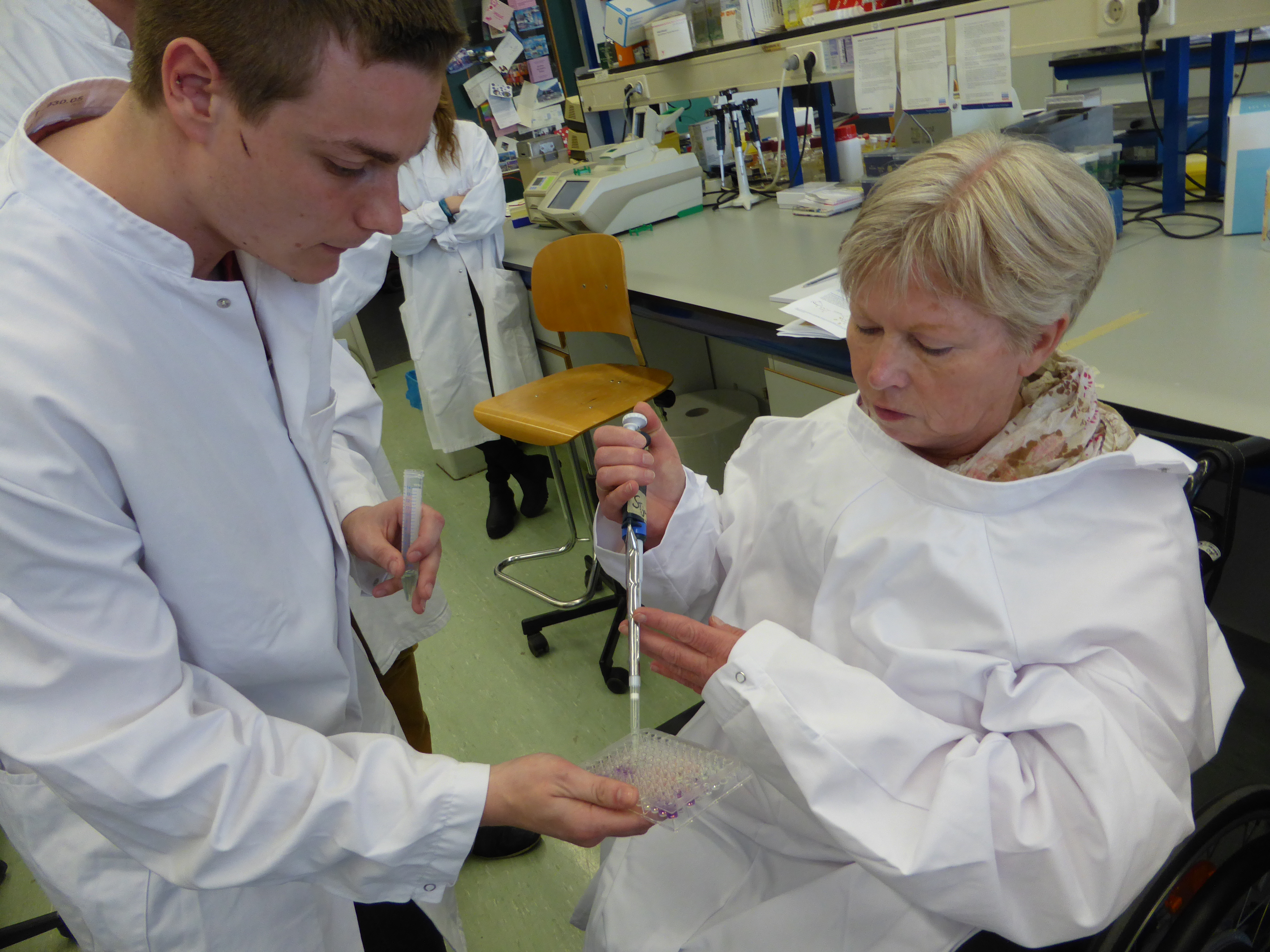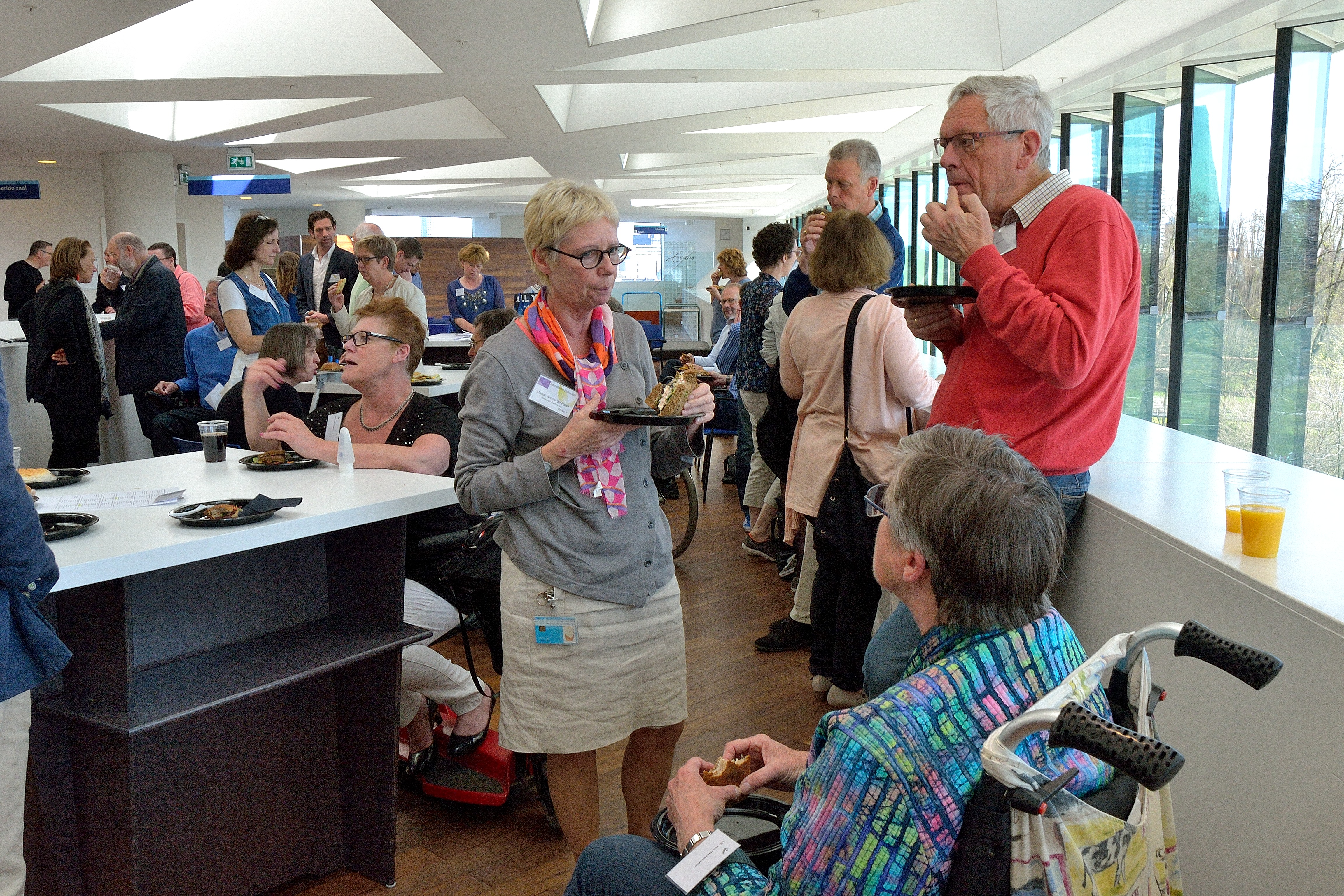The 2nd International Pompe Day was organised in the Netherlands by the Dutch Neuromuscular Disease Association in conjunction with the Centre for Lysosomal and Metabolic Diseases. The goal of the day was to provide insight in the latest developments of the several research areas and to give people the opportunity to have a look behind 'the curtain' of the laboratory. Another aim was to allow researchers and patients and their families to meet each other.
In the morning short presentations were given by Ria Broekgaarden (Dutch Neuromuscular Disease Association), Prof. Dr. Ans van der Ploeg, Prof. Dr. Pieter van Doorn and Dr. Pim Pijnappel. They provided from their perspective an insight in the newest developments in Pompe research in the Erasmus MC. It was pinpointed how important continious innovation is and that it goes with little steps.
In the afternoon 6 groups of patients and their family members visited the laboratory of the Centre. Several aspects of research were showed and demonstrated by PhD students and researchers. The topics were:
- Development of current enzyme replacement therapy for Pompe disease: A historical overview
- Diagnosis of Pompe disease: New molecular insights
- Why are there differences between patients regarding disease development?
- What happens in the muscles in patients with Pompe disease?
- Stem cells: How to make muscle cells from normal skin cells?
- The development of gene therapy in Pompe disease
The workshops were very interesting and everyone could ask questions and sometimes even experiment themselves.
No one could of course provide any guarantee if the outcome of this research would be positive and become available. But fact is that much is done to improve the lives of people with Pompe disease.
At the end of the afternoon Prof. Dr. Ans van der Ploeg and Dr. Pim Pijnappel answered the various questions of participants.
The 2nd International Pompe Day was a success. It was very positive for all of us to get in contact with physicians and students and to be able to ask questions and exchange ideas.


